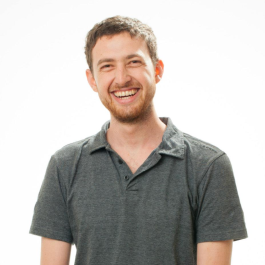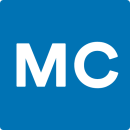Across roles, the success of remote work hinges on a blend of routines, structured time for collaboration and intentional moments for focused productivity.
Three data engineers told Built In how a balance of structured schedules, habits for personal well-being and strategic communication drive both individual and team success when working from different time zones.
Establishing a morning routine helps set the tone for a productive day. Elor Arieli, engineering manager at Monte Carlo, starts each day with a coffee, pastry and half an hour with a book — “a ritual that helps me start my day very refreshed and energetic,” he said.
Meanwhile, Mary Kate Supplitt, senior data scientist at Dropbox, begins her day with a morning run and breakfast before tackling her workload.
Randy Williams, senior data scientist at CertifID, finds that walking his puppy before starting the workday helps establish a boundary between home life and work time.
These moments of personal reset, whether through exercise, reading or time with a pet, can create a smoother flow into a focused workday by creating a natural transition into work.
Staying active is a common thread among these professionals as a means to counterbalance the sedentary nature of remote work, a sentiment echoed by Arieli, who incorporates gym breaks into his day.
By combining structured work time, thoughtful communication and habits that support personal well-being, these remote professionals navigate the complexities of time zones and differing work rhythms. Their approach offers a blueprint for successful remote work, highlighting the importance of balancing collaboration with focused effort and finding joy in the flexibility that remote work offers.
Dropbox provides cloud-based solutions for file storage, sharing and collaboration, leveraging AI to transform knowledge work for over 700 million users.
Tell us about your usual day working remotely.
I tend to start my day similarly to when I went into an office. On most days, I’m up early for a morning run followed by breakfast and coffee. Working from home allows me a little extra time to catch up on the news before I typically sit down around 8:30 or 9 a.m.
Meetings for me are typically stacked towards the first part of the day to allow for collaboration across time zones. For me, this was a bit of an adjustment because I previously did most of my focused work time in the morning, however it allows for big uninterrupted blocks in the afternoon.
What habits or routines help you to thrive as a data engineer in a remote environment?
I try to structure my day pretty similar to how I did going into the office. I don’t do anything particular to mimic a commute — that was the worst part of my day! — but I am still exercising most mornings. I often take small walks during the day, but for me keeping work time focused on work helps with my productivity.
Working from home sometimes means there are more opportunities for distractions, so I typically assign myself one or two tasks daily that need to get done. Outside of meetings, those are my priorities, and I like to set myself a timer to dig into them and focus before allowing myself to get distracted on other projects. This is super helpful for getting myself into a flow and remaining productive. I almost always do my “most annoying” task first to get it out of the way because I work best when settled in without big disruptions.
“I almost always do my ‘most annoying’ task first to get it out of the way because I work best when settled in without big disruptions.”
How do you balance “heads-down” concentration with collaborative work while working remotely?
My team at Dropbox generally does a great job keeping standing meetings within my morning hours of about 9 a.m to 1 p.m. This means that afternoons are almost always free for either heads-down work or deep collaboration! One of the tricky aspects about remote work is needing to be proactive in reaching out for more casual brainstorms and collabs. I try to utilize quick Zoom syncs as much as possible and often spend one-on-ones simply brainstorming and talking out loud even if we don’t have a super-focused agenda topic for the day.
Part of my role is to help shape team strategy through data and insights. Since I don’t have as much casual conversation time, one technique I deploy is to create a personal insights channel and invite several people to it. This is where I share in-progress work, random insights I find that might not be fully packaged or ideas I have. I have found this super helpful in driving conversations and inspiring future work as colleagues can comment on their own time and keep up with my progress!
Monte Carlo provides a data observability platform that helps organizations monitor, troubleshoot and ensure the reliability of their data pipelines.
Tell us about your usual day working remotely.
Working for a company in a different time zone, I have more free time in the morning than the evening. Every day starts with a coffee and then sitting down to catch up on Slack and emails. I then work until lunch — mostly on “keeping the lights on” work and things that do not require collaboration. After lunch, most people start to get online due to the time zone difference and I have a few meetings, then work until the evening is mostly on shared or joint projects with other people.
What habits or routines help you to thrive as a data engineer in a remote environment?
I have a very strict morning routine that I do not break. My morning ritual of coffee, pastry and a book for 30 minutes helps me start my day very refreshed and energetic. Sometimes in the middle of the day, I take a break to go to the gym since I can work late into the evening many times. I highly recommend setting aside focus time and making sure meetings are squeezed together as much as possible to allow you to actually get things done without too much context switching. In order to transition into my evening, I just close the laptop!
“I highly recommend setting aside focus time and making sure meetings are squeezed together as much as possible to allow you to actually get things done without too much context switching.”
How do you balance “heads-down” concentration with collaborative work while working remotely?
I think the main thing to be done in order to mix concentration time and collaboration when working remotely is making sure you have time slots for meetings and focus time. Having the planning and action items for each member of the team as clear and laid out as possible allows each person to concentrate on their part of the system. Regular syncs help keep everyone together.
I use mostly Slack and Zoom to communicate paired with Notion and Linear to organize the tasks and action items across the team. Even with good planning, the main obstacle can be when you need another team member and they are not available.
CertifID is a fraud-prevention platform that safeguards wire transactions by verifying the identity of individuals involved in real estate transactions.
Tell us about your usual day working remotely.
I often start my day by checking Slack on my phone while getting up. I’ll flag any messages that require follow-up with a “Remind me about this...” so I can revisit later in the morning.
I’ll typically sit down at my desk around 8:30 a.m. or 9 a.m., read any remaining Slack messages and follow up on anything I’d tagged earlier. Our team check-ins are midday Mondays, Wednesdays and Fridays, and I’ll have occasional one-on-one meetings or other meetings scheduled throughout the day.
My projects involve a range of data engineering, business analytics and working with internal teams on questions. I help build and maintain some of our ELT data pipelines and code. I also build a range of analyses, reports and dashboards for our teams to use, and have created some rudimentary forecasting for key business metrics.
I have a pretty normal schedule — roughly 9 a.m. to 5 p.m. I’m in Seattle, and our team has been great about finding meeting hours that work across our different time zones. In the rare case when I miss a meeting, I catch up watching the recording later.
What habits or routines help you to thrive as a data engineer in a remote environment?
I use a spare bedroom as an office. That helps create a separate space for work. Over the years, I’ve found that physical distinction has eased the daily transition between work and life.
I adopted a puppy named Cricket last summer, which created a new daily routine. Each morning, I’ll take her for a walk around the block before starting my day. When my pup is not at daycare, I try to get her out for a few walks throughout the day, which also gives me a break from looking at a screen. There’s a small park and trail near my home, so I have plenty of opportunities to get a quick break and enjoy some nature and fresh air — even with Seattle’s winter drizzle.
I’ve found that working from home can make me more sedentary, which is a constant challenge. My best work comes when I’m working out a few times each week. I would absolutely recommend to anyone else to prioritize staying active — however works for them and however they can!
“I would absolutely recommend to anyone else to prioritize staying active — however works for them and however they can!”
How do you balance “heads-down” concentration with collaborative work while working remotely?
We use Slack nearly exclusively for communication at CertifID. Half of our employees are remote, and the rest are in our Austin or Grand Rapids offices. Everyone does a great job staying inclusive with Google Meet, Zoom or a quick Slack Huddle. I never worry about missing out on conversations that way. I also get to catch up with folks in-person during quarterly visits to one of our offices.
With just two of us on the data team right now, I’ve been able to maintain focus time in my schedule. Even when our team grows in the future, we’ll be able to prioritize our work and enable team members with self-service tools.
For asynchronous updates, Loom videos are really helpful for complex topics or analyses. I often record a short video walkthrough to share a completed project. That helps avoid meetings and keeps projects moving forward.
We’ve also started building connections in our weekly companywide meeting. I’ll occasionally ask everyone to make a guess about a topic as varied as future mortgage rates to product adoption. It’s a fun way to promote analytical thinking from everyone, especially with many of us working remote.











